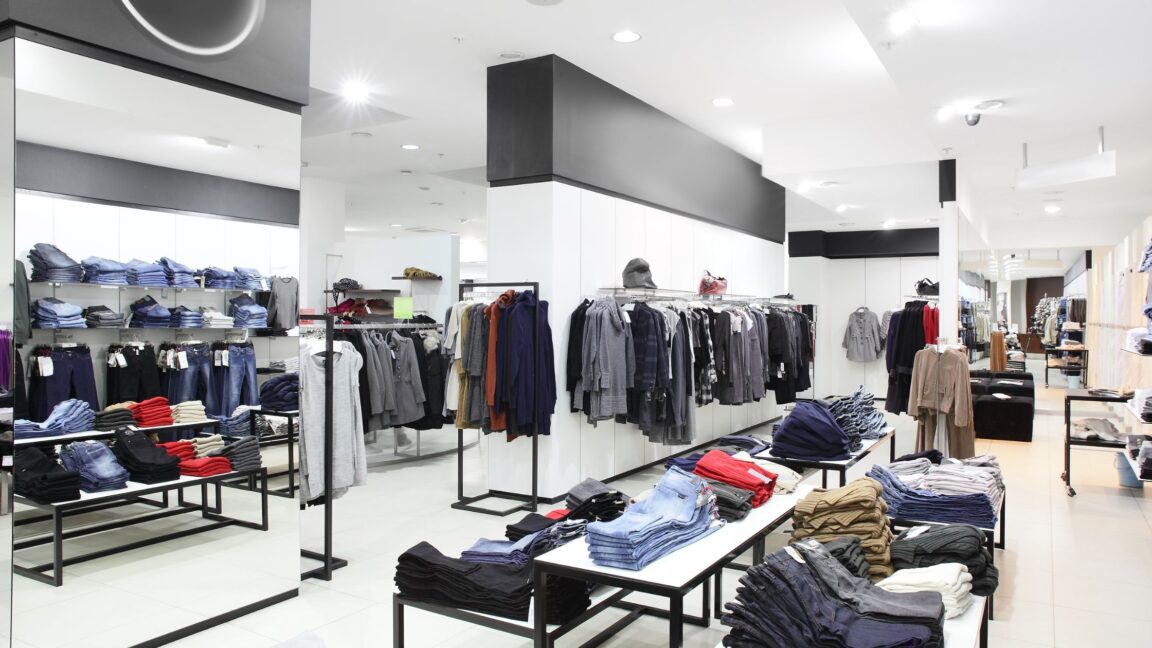Consumers are increasingly willing to shop outside of their assigned genders in this day and age. Gender diversity discussions are no longer taboo. They have taken center stage. Many genderless fashion brands are on the rise due to this cultural shift. These new brands are supported by fashion industry capital and mainstream media.
Established fashion brands had relied on the binary gender system for decades, having opened their doors long before a genderless approach became popular. How should these companies respond to this new reality? What are the implications for their e-commerce strategies, specifically regarding product offering, experience, and content, but also operationally?
Gender Reveals Were Not Always Popular.
Despite changes in the 17th century, babies and children’s garments remained similar, regardless of gender, until the first half of the twentieth century, when the industry began differentiating children’s clothing by gender in terms of cut, pockets, images, and decoration, but not color. Pink and blue were used as “baby colors,” and not even department stores could agree on which.
Several popular female personalities began to show their preference for pink in colored magazines during the 1940s and later on color television in the 1950s. Manufacturers and retailers interpreted their popularity as consumer preferences. Men ruled the entire fashion industry at the time.
Boundaries Are Being Blurred.
Fortunately, both the fashion industry and society as a whole are changing. Because of the cultural revolutions of the twentieth century, easy access to all kinds of information and points of view online, and the ability to communicate with a diverse range of people using social media, a small circle can no longer dictate fashion standards and how consumers should behave.
We know that gendered dress may appear completely harmless, but it can present a problem for people who live outside of their society’s old-fashioned gender norms. Even for people who generally conform to gender norms, it limits their options, as anyone who couldn’t find a piece of clothing in their size or color can attest.
We can find numerous examples. Because of the color options, one of the fathers prefers to shop for trousers in the womenswear section. My 5- and 9-year-old sons adore the girls’ section t-shirts because they are colorful and have shiny details. According to a survey, 58% of women, particularly younger generations, believe wearing men’s underwear should be socially acceptable.
A Young Man Who Adores Unicorns
Regarding gender fluidity, brick-and-mortar stores face many constraints because they must create a single shopping experience for everyone who walks in. In contrast, e-commerce can offer personalized shopping experiences from the start.
Online apparel sales accounted for 46% of total revenue in the United States in 2020, up from 26% three years earlier. With the e-commerce fashion industry expected to grow to a staggering $1 trillion by 2025, focusing on a genderless approach online first is the way to go in terms of ROI.
In terms of opportunities to reach out to younger generations, many children’s fashion brands, such as Mini Rodini, Bobo Choses, and Primary, are already taking a gender-neutral approach in their e-commerce and how they create and market their products.
Rewriting The Story
Although all of the cultural and behavioral changes mentioned above are taking place right now, we can’t ignore that most consumers are still used to and expect to begin their journeys using the binary gender system. This is evident in the UX, navigation, and content architecture of most major fashion brands and retailers’ e-commerce sites, including many famous brands.
It’s difficult to say what sets expectations for a gender-based experience – whether based on a majority of consumers’ true preferences and needs or the widespread adoption of this system by all major retailers. This a classic case of the age-old question: did the chicken or the egg come first?
For Anyone And Everyone
Fortunately, with the implementation of personalization and conversion rate optimization (CRO) strategies, we can now create experiments to test new approaches to assisting users in finding what they want that will work better than the gender-based system.
The current gender-based system may continue to work best for most people for some time. But based on what brands know about their customers—as segments or on an individual level—they can gradually roll out experiences that feel more relevant for everyone rather than just the majority.
Because it is critical to understand customers better, special attention should be paid to how to collect and handle first-hand data to make the most informed decisions.
The best approach is not to layer gender-free experiences on top of existing gender-based architectures, which will likely lead to confusion. Instead, brands should strive to treat their customers based on what distinguishes them rather than what they all have in common.

Change Of Operations
As we’ve seen, there are approaches to addressing gender-free experiences in content architecture and product offerings. However, once implemented, other unanticipated technical and operational challenges may arise.
Large fashion companies may have divided their corporate departments by gender. They may have creative and research teams, content factories, and public relations teams dedicated to a specific gender. Separate warehouses and supply chains could even exist. These brands are likely to move slower than newer brands that have taken a gender-neutral approach. After all, changing your product architecture online is only possible if you match it with a product offering.
Another issue to consider is how to deal with sizing. This issue has been attempted and failed numerous times in the past. It is impossible to account for body differences in different parts of the world because it is frequently based on gender. Fortunately, new technologies can once again come to the rescue. A new gender-neutral sizing system could be part of the solution to this centuries-old issue.
Flipping The Script In Marketing
Up until now, marketers have been taught not to question the concept of binary gender. It’s deeply embedded in muscle memory. Outdated gender constructs continue to influence organizational thinking. They can be found in the biases, personas, databases, insights, and more. Consider the volume of market research conducted with strict sampling requirements for male and female respondents, for example.
A gender-neutral approach and communication will only work or feel natural if the brand’s values are aligned in the first place. However, if these brands are to remain relevant to future generations, they may need to reconsider their values sooner rather than later. According to a survey, 59% of Generation Z believe that when asked about a person’s gender, there should be options other than “man” and “woman” in forms or online profiles.
Gender is a proxy, and no marketer should have to build a brand based on guesswork that relies on a faulty construct. Smart marketing is about using data and analytics intelligence to build a brand that understands and serves customers’ unique and individual needs, regardless of where they identify on the gender spectrum.
The Children Are Fine
Finally, there is no one-size-fits-all solution for dealing with a gender-neutral approach in fashion e-commerce. Many factors will be considered, including brand values, corporate structure, technological capabilities, consumer profile, product offering, size, etc.
A genderless approach to fashion e-commerce could offer all brands not only the ability to cater to non-binary shoppers but also to enhance the shopping experience for younger generations who are no longer bound by choices made by people with mindsets from decades or centuries ago.
Being ahead of the curve and preparing for these new and future generations of consumers can only benefit businesses.
Genderless Fashion: A Fad or Future?
Our physical and digital identities are being transformed by non-binary clothing. Let’s dissect this industry-wide shift and see how it will affect us in the future.
Genderless fashion has a long history. In the 1960s, the visionary Italian-French designer Pierre Cardin launched his egalitarian “Space Age” collection to usher in an era of unisex clothing. Its ever-increasing popularity soared over the decades, propelling its global impact into today’s digital frontier. Fashion houses are now designing genderless, ageless, and sizeless garments in the metaverse. Let’s go exploring.
A Growing Occurrence
Unisex fashion is a way of dressing that is liberated from traditional constraints. Gender, race, age, culture, and sexual orientation transition from fixed, established characteristics to non-conforming, fluid identities. This type of clothing is manifested in neutral colors with undefined structures and is not specifically tailored for masculine or feminine physical traits. Instead, it adopts a broader appeal, catering to individual expression regardless of orientation. Over 56% of Gen Z consumers purchased gender-neutral clothing last year.
A Virtual Comeback
Genderless fashion is now going digital. Gaming avatars are no longer forced to wear “boy” or “girl” clothing; clothing brands promote digital-only, gender-neutral fashion shows. Brands enter the metaverse to embrace rising demand and market inclusivity by transforming physical pieces into 3D designs. Zara, the retail mogul, collaborated with Gen Z’s beloved Ader Error to launch a non-binary collection, both virtual and physical.

An Underlying Danger
Although the metaverse promises industry inclusivity, digital identities have the potential to undermine diversity efforts. When users enter the virtual realm, their physical characteristics become irrelevant. Choosing an avatar to match or deviate from their appearances is left to computer-generated anatomies and personalities, the majority of which are still limited in terms of options. According to a recent survey, 60% of respondents believed that their online identities did not accurately represent them. The lack of genuine representation may influence preferences in digital clothing, potentially affecting brands that advocate for gender equality.
The path to non-binary fashion is long, but it is hopeful. The rise of virtual worlds may hasten what began in the 1960s and provide traction in the metaverse for a more progressive future. By 2030, the youngest members of Generation Z will be 20 years old, and the fashion industry can anticipate how their 143 billion USD in spending power will impact fashion in the real world and beyond.




GIPHY App Key not set. Please check settings